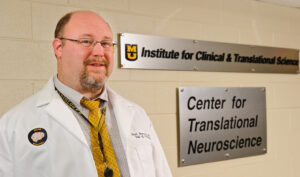A “golden goose” of the autism research world is finding a screening test that can accurately and efficiently identify autism risk in patients early in life so that they can receive treatment and resources as soon as possible. Clarifi ASD, developed by Quadrant Biosciences, might be a test that could help identify children with autism early.
In order to determine if Clarifi ASD can accurately predict autism risk, the Thompson Center is serving as a recruitment site to identify patients willing to help test the effectiveness of the new screener.
“How this test could potentially fit into the clinical picture for autism diagnosis currently is unclear,” said Dr. David Beversdorf, a researcher at 
Clarifi ASD examines patient saliva samples to determine if RNA patterns believed to be associated with autism are present. RNA works with DNA inside cells, using the genetic information provided by DNA to direct cells on how to function. By studying RNA patterns in saliva, the test developers at Quadrant Sciences believe they can predict if patients are at risk for autism.
“This test is different from a genetic test using DNA, because instead of looking for specific genes that cause autism, this test looks for signs that autism might exist based on specific RNA patterns,” Beversdorf said. “RNA patterns are like a looking for footprints. While the role of the RNA in the cause autism is not yet clear, it can potentially indicate that autism exists, like a footprint in the sand.”
The Thompson Center researchers say that by studying RNA patterns of enough people with and without autism, they hope to determine if this is indeed an effective way to determine autism risk.
By participating in this study, the Thompson Center is yet again leading the charge in searching for the best ways to diagnose and treat autism and other neurodevelopmental disorders. This study is ongoing and participants are needed. If you are interested in participating, contact Kathy Hirst at 573-882-5643 or hirstka@health.missouri.edu.

